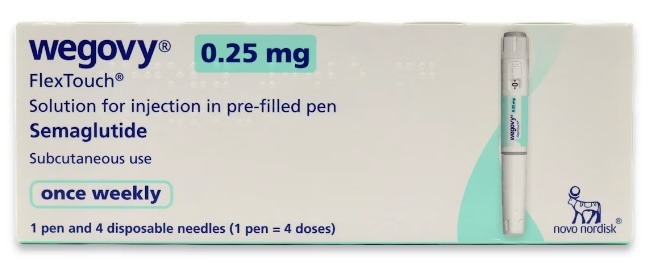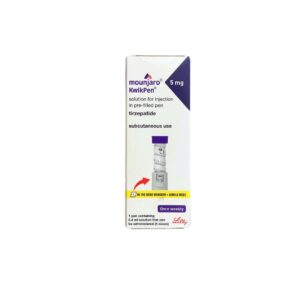Saxenda 6mg/ml Injections
Description
What is Saxenda and how does it work?
Saxenda is a medication that can help with weight management. Saxenda is a prescription medication used to aid in weight loss for adults who are overweight (BMI ≥ 27) or obese (BMI ≥ 30), particularly if they have weight-related medical conditions such as type 2 diabetes or hypertension. Saxenda works by mimicking a hormone in the body called GLP-1, which regulates appetite. It helps reduce hunger and increase feelings of fullness, leading to lower calorie intake and weight loss when combined with a healthy diet and exercise.
Warnings
- Please contact your doctor if you are a breastfeeding mother.
- Saxenda and Liraglutide should not be used at the same time because Liraglutide is a type 2 diabetes medication that is taken together with a low-calorie diet and regular exercise.
- If you have a personal or family history of cancer, or insulin-dependent diabetes, you should not use Saxenda.
- Your doctor will do lab tests at regular intervals to monitor the impact of this medicine. Keep all appointments.
- Children should never have access to Saxenada or any other medications and you should never offer your medication to anybody.
Directions
- Read the instructions for use especially if you are using it for the first time.
- Ensure to use it exactly as prescribed by a healthcare provider.
- Begin on a restricted-calorie plan and increase physical activity when you start taking Saxenda.
- Saxenda should not be injected into a vein or muscle.
- If you take too much Saxenda, contact your healthcare provider right away because an overdose may induce severe nausea and vomiting.
- Saxenda can be used with or without food.
Ingredients
- The active ingredient in Saxenda is Liraglutide
- The inactive ingredients in Saxenda are hydroxyethylcellulose, sodium chloride and water for injection.
Side Effects
The following are some of the potential side-effects that may occur when taking Saxenda:
- Kidney failure
- Increased heart rate
- Swelling of the face
- Fainting
- Difficulties in breathing.
It is important to note that Saxenda does not work as a quick fix for weight loss. It takes time and effort to see the results, therefore, it requires commitment.
FAQs
1. How often should I use Saxenda?
Saxenda is injected once daily, at any time of day, with or without food. Your doctor will guide you on the correct dose and schedule.
2. How much weight can I expect to lose with Saxenda?
Individual weight loss varies, but clinical studies have shown that Saxenda, combined with diet and exercise, can lead to significant weight reduction over several months.
3. Is Saxenda safe for long-term use?
Saxenda is approved for long-term use, but it is important to have regular check-ups with your healthcare provider to monitor progress and any potential side effects.
4. Can I take Saxenda if I have diabetes?
Yes, Saxenda can be used in individuals with type 2 diabetes, but it is not a treatment for diabetes. Your prescriber will guide you on how to manage both conditions.
5. Are there any dietary restrictions while using Saxenda?
While there are no specific food restrictions, Saxenda should be used in conjunction with a calorie-controlled diet and regular exercise for best results.




